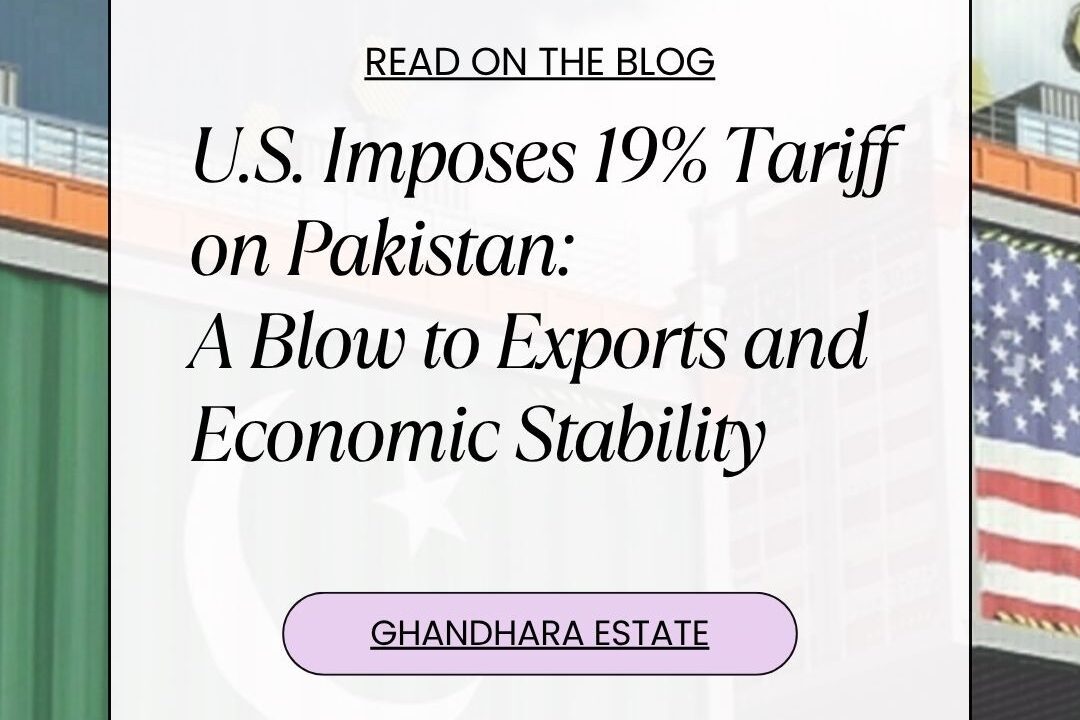

In a significant policy shift, the United States has imposed a 19% tariff on imports from Pakistan, triggering concern among exporters and policymakers. This move is poised to impact Pakistan’s already struggling economy, as the country battles high inflation, rising external debt, and a depreciating rupee.
📉 What Does the 19% Tariff Mean?
A tariff is a tax imposed by a country on goods coming from another nation. By imposing a 19% tariff, the U.S. has effectively made Pakistani products more expensive for American buyers, reducing their competitiveness in the U.S. market.
Major Export Sectors Affected:
- Textiles & garments (which form over 60% of Pakistan’s exports to the U.S.)
- Leather goods
- Surgical instruments
- Sporting goods
These industries largely rely on international orders and operate on tight margins, meaning a 19% cost hike can result in a significant drop in sales.
📊 Economic Impact on Pakistan
1. Decline in Exports
The U.S. is Pakistan’s largest export destination, accounting for more than $6 billion annually. A steep tariff could cut that by 20-30%, hitting Pakistan’s foreign exchange reserves and worsening the current account deficit.
2. Job Losses
The textile and manufacturing sectors employ millions, especially in Punjab and Sindh. Export slowdown means factories may scale down or shut operations, risking job losses and increased unemployment.
3. Pressure on Rupee
Lower exports = lower dollar inflow. This could lead to further depreciation of the Pakistani rupee, increasing the cost of imports like fuel, machinery, and food items.
4. Investor Sentiment
Tariffs reflect diplomatic or economic dissatisfaction. This move might signal to foreign investors that Pakistan is less stable or less favored in U.S. policy circles, deterring foreign direct investment (FDI).
🌐 How Do Neighboring Countries Compare?
Let’s examine how other South Asian nations are treated in terms of U.S. trade tariffs:
| Country | Average U.S. Tariff Rate | Special Trade Privileges | Key Notes |
|---|---|---|---|
| India | ~7% on textiles & garments | No GSP after 2019 | India lost GSP status, but strong tech exports balance the impact |
| Bangladesh | ~15.6% on garments | No duty-free access | Still competitive due to ultra-low production costs |
| Sri Lanka | ~8-10% on textiles | No GSP+ with U.S. | Seeking bilateral FTAs |
| Vietnam | ~8.4% (averaged) | Benefiting from U.S.-China trade shift | Huge investment in compliance and quality |
| Pakistan | 19% | No Free Trade Agreement (FTA) | Among the highest tariff burdens in the region |
🔍 Observation: Pakistan is now among the most penalized South Asian exporters in the U.S. market. While countries like Bangladesh and India face tariffs, they still retain larger U.S. market shares due to scale, policy stability, or alternate trade deals.
🛑 What Can Pakistan Do?
- Seek Bilateral Trade Deals: Propose Free Trade Agreements (FTAs) or preferential access to regain competitiveness.
- WTO Dispute or Diplomatic Lobbying: Challenge the tariff or push for fairer treatment through diplomatic channels.
- Diversify Export Markets: Shift focus toward Europe (GSP+), the Middle East, Africa, and Southeast Asia.
- Boost Product Quality & Branding: Invest in value addition, certifications, and branding to justify higher prices.
- Negotiate under GSP Renewal Framework: Re-enter trade preference talks with the U.S. administration.
🔚 Conclusion
The 19% U.S. tariff on Pakistani exports is more than just a tax — it’s a warning sign for Pakistan’s fragile economic model heavily dependent on limited markets. While regional competitors face tariffs too, Pakistan’s lack of diversified exports, weak diplomacy, and underdeveloped trade agreements make the impact more severe.
It’s time for policymakers, exporters, and trade bodies to come together to rethink Pakistan’s trade future — because isolation in global trade is no longer an option.
